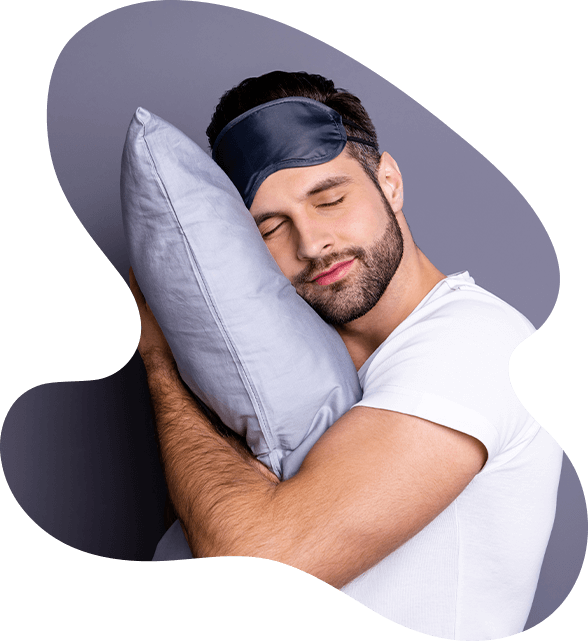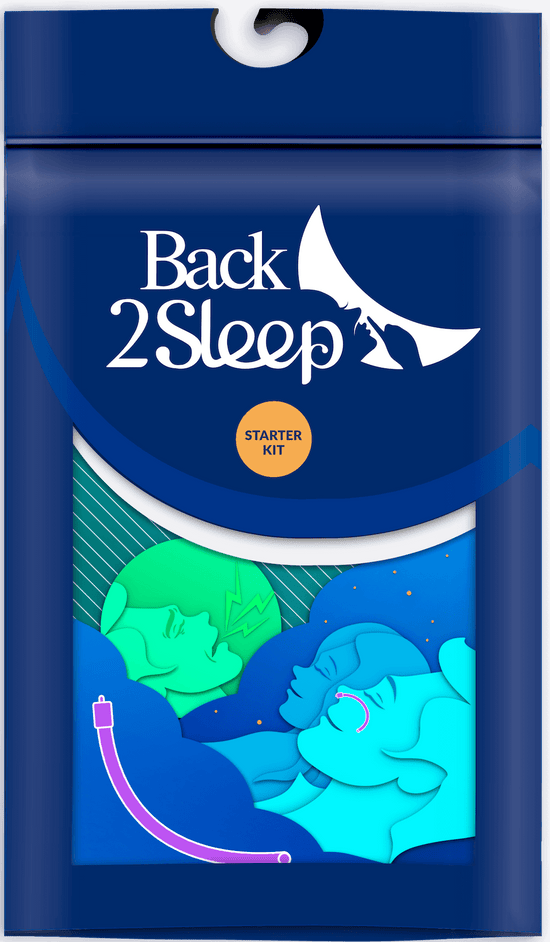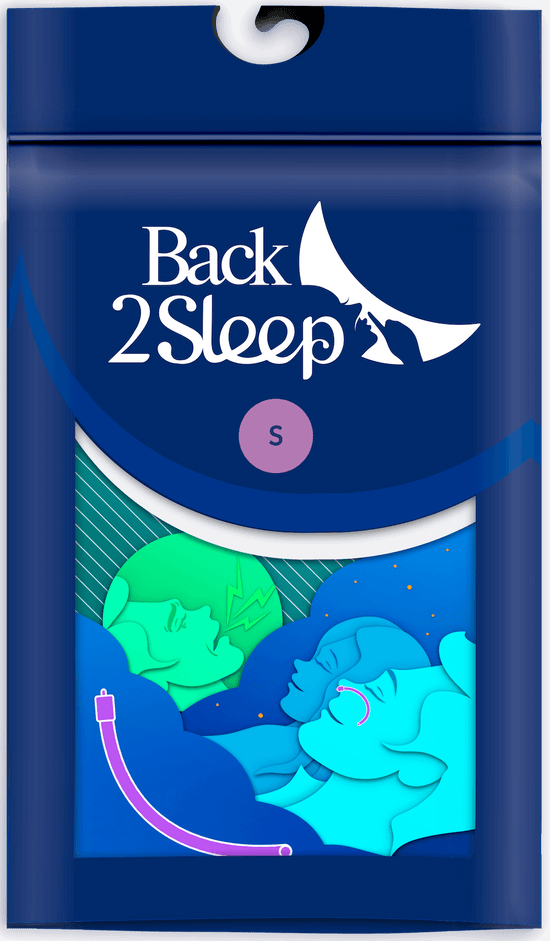Ein anderer Ansatz zur Behandlung von Schlafapnoe und Schnarchen
Nasenstent-Technologie - 92 % Benutzerzufriedenheitsrate
Ein intranasaler Stent, der Ihren weichen Gaumen erreicht • Keine Masken • Kein Strom • Keine Kieferumstellung
Einfache 10-Sekunden-Einführung • Arbeitet die ganze Nacht geräuschlos • Ab 0,83 € pro Nacht
-

1 Million
Röhren verkauftWeltweit vertrauenswürdig

57.000
ApothekenWeltweit verfügbar

CE Medizinisches
GerätKlassifiziert nach Klasse I

92%
ZufriedenheitBenutzer genehmigt
⚠️ Wichtige Informationen über Schlafapnoe
Während des Schnarchens und der Schlafapnoe wird die Atmung unterbrochen. Der Blutsauerstoffgehalt kann unter 90 % fallen. Ihr Herz arbeitet härter, um dies auszugleichen. Ihr Gehirn weckt Sie teilweise 30-60 Mal pro Stunde auf – zu kurz, um sich daran zu erinnern, aber genug, um die Schlafqualität zu beeinträchtigen.
🚨 Statistiken zur Schlafapnoe zum Nachdenken
Gesundheitliche Auswirkungen von unbehandelter Schlafapnoe
-
❤️ Herz-Kreislauf-Effekte
• Bluthochdruck bei 50 % der Patienten
• Unregelmäßiger Herzschlag (Vorhofflimmern)
• Herzvergrößerung durch erhöhte Arbeitsbelastung
• Erhöhtes Risiko für Blutgerinnsel und Schlaganfall
• Höheres Risiko für kardiale Ereignisse während des Schlafs -
🧠 Gehirn & psychische Gesundheit
• Gedächtnis- und kognitive Schwierigkeiten
• Depression bei 63 % der Betroffenen
• Angstzustände und Stimmungsschwankungen
• Erhöhtes Alzheimer-Risiko
• Potenzielle Veränderungen des Gehirngewebes -
🏥 Metabolische Auswirkung
• Typ-2-Diabetes in 48 % der Fälle
• Gewichtszunahme und Schwierigkeiten beim Abnehmen
• Risiko für Fettlebererkrankungen
• Chronische Entzündungen
• Hormonelle Ungleichgewichte
💔 Auswirkungen auf Beziehungen
Partner verlieren oft 1-2 Stunden Schlaf pro Nacht aufgrund von Schnarchen. Nach 5 Jahren geben 50 % der Paare an, in getrennten Schlafzimmern zu schlafen. Dies kann die Intimität und die Zufriedenheit in der Beziehung beeinträchtigen. 27 % der Scheidungen führen Schnarchen als beitragenden Faktor an. Die sozialen Auswirkungen erstrecken sich auf Familientreffen und Reisesituationen.
Verstehen der verschiedenen Behandlungsmöglichkeiten bei Schlafapnoe
CPAP-Geräte: Die Standardbehandlung
CPAP (Continuous Positive Airway Pressure) wird von Schlafspezialisten weit empfohlen und kann bei konsequenter Anwendung sehr effektiv sein. Studien zeigen jedoch, dass 30-50 % der Patienten innerhalb von 6 Monaten Schwierigkeiten mit der langfristigen Einhaltung haben.
Häufig berichtete Herausforderungen:
• Anfangskosten von 800-2000 € plus laufende Ausgaben
• Einige Benutzer erleben Klaustrophobie mit Gesichtsmasken
• Hautreizungen oder Abdrücke durch Gurte
• Maschinengeräusche, die Schlafpartner stören können
• Reiseprobleme mit der Ausrüstung
• Tägliche Reinigungsanforderungen
• Symptome von trockenem Mund und Hals
• Einschränkungen der Schlafposition
• Abhängigkeit von StromTrotz dieser Herausforderungen bleibt CPAP eine wichtige Behandlungsoption, die für viele Patienten gut funktioniert, wenn sie sich daran gewöhnen können.
Zahnspangen (MADs): Ein alternativer Ansatz
Unterkiefer-Vorschubgeräte wirken, indem sie den Kiefer nach vorne verlagern. Sie können bei einigen Patienten wirksam sein, insbesondere bei leichter bis mittelschwerer Schlafapnoe.
Wichtige Überlegungen für Zahnmedizinische Geräte:
• Kiefergelenksbeschwerden bei 40 % der Anwender berichtet
• Mögliche Zahnbewegungen, die überwacht werden müssen
• Maßanfertigungskosten von 500-1500 €
• Übermäßiger Speichelfluss oder trockener Mund
• Sprechen oder Trinken während des Tragens nicht möglich
• Kann bei einigen Personen den Würgereflex auslösen
• Die Wirksamkeit variiert (60-70 % bei Verträglichkeit)Chirurgie: Wenn andere Optionen nicht funktioniert haben
Chirurgische Eingriffe werden typischerweise in Betracht gezogen, wenn andere Behandlungen nicht erfolgreich waren. Die Ergebnisse variieren je nach spezifischem Verfahren und individueller Anatomie.
Wichtige chirurgische Faktoren:
• Kosten liegen zwischen 5.000 und 15.000 €
• Erfolgsraten variieren (ca. 50 %)
• Erholungszeitraum von 4-6 Wochen
• Risiko von Stimm- oder Schluckveränderungen
• Anforderungen an die Allgemeinanästhesie
• Kann die zukünftige Verwendung von CPAP beeinflussen, falls erforderlich
• Ergebnisse können sich im Laufe der Zeit ändern
🎯 Back2Sleep: Ein anderer Ansatz
Nach 10 Jahren Forschung und Entwicklung bietet Back2Sleep einen intranasalen Stent, der den weichen Gaumen erreicht – und so die Atemwegsobstruktion an der Quelle bekämpft.
Wie der Back2Sleep Nasenstent funktioniert
1. Einfache Einführung: Der weiche Stent aus medizinischem Silikon gleitet sanft durch Ihr Nasenloch. Der Vorgang dauert etwa 10 Sekunden und wird schnell zur Routine.
2. Erreicht den weichen Gaumen: Unser Design reicht bis zu Ihrem weichen Gaumen – dem Ort, an dem der Kollaps der Atemwege häufig auftritt. Dies unterscheidet unseren Ansatz von anderen Nasenapparaten.
3. Hält die Atemwege offen: Der Stent schafft einen konstanten Luftkanal. Ihre Weichteile können sich natürlich entspannen, ohne den Luftstrom zu blockieren. Still, komfortabel und unauffällig.
🔬 Die Wissenschaft hinter unserem Ansatz
Während des Schlafs entspannen sich die Rachenmuskeln natürlich. Bei Schlafapnoe-Patienten führt diese Entspannung dazu, dass das weiche Gaumensegel und das umliegende Gewebe nach hinten kollabieren und die Atemwege blockieren. Während CPAP Luft durchdrückt und MADs den Kiefer nach vorne ziehen, ist unser Ansatz anders.
Back2Sleep funktioniert, indem es einen physischen Kanal durch den Verengungspunkt aufrechterhält und so einen kontinuierlichen Luftstrom unabhängig von Muskelentspannung, Schlafposition oder anderen Faktoren gewährleistet.
Treffen Sie den HNO-Spezialisten hinter Back2Sleep
Professor Frédéric Chabolle, MD
„Nach 35 Jahren Durchführung von Schlafapnoe-Operationen und Beobachtung der verschiedenen verfügbaren Behandlungsmöglichkeiten stellt Back2Sleep eine einfache Lösung dar, die die Atemwegsobstruktion direkt anspricht.“
Beruflicher Hintergrund:
• Leiter der HNO-Abteilung, Hôpital Foch (1993-2019)
• Derzeit in Privatpraxis in Neuilly-sur-Seine tätig
• Präsident der Französischen Gesellschaft für HNO
• Autor von über 160 wissenschaftlichen Veröffentlichungen
• Pionier in Frankreich der medikamentös induzierten Schlafendoskopie
„Ich empfehle Back2Sleep Patienten, die nach Alternativen zur CPAP-Therapie suchen oder bevor sie eine Operation in Betracht ziehen. In meiner Praxis äußern 92 % der Anwender Zufriedenheit mit diesem Ansatz.“Ergebnisse klinischer Studien
Belege aus von Experten begutachteten klinischen Studien
Primäre klinische Studie: 6-monatige multizentrische Studie
Back2Sleep (ehemals Nastent®) therapeutische Wirkung auf den Apnoe-Hypopnoe-Index
Bestätigte Verbesserung der Sauerstoffsättigungsindexwerte
Studienangaben:
• Teilnehmer: 248 Patienten mit leichter bis mittelschwerer OSA (AHI 15-30)
• Dauer: 6 Monate kontinuierliche Anwendung
• Methodik: Doppelblind, Placebo-kontrolliert, multizentrisch
• Messungen: Polysomnographie, Sauerstoffsättigung, Partnerbefragungen
• Veröffentlicht: European Respiratory Journal, März 2024-
-
96%+
Sauerstoffsättigung
Während der Nacht aufrechterhalten -
92%
Benutzerzufriedenheit
Würde anderen empfehlen -
85%
Schnarchreduzierung
Vom Partner berichtetes Volumen
Vergleichsleitfaden: Verständnis Ihrer Behandlungsoptionen
Echte Erfahrungen von Back2Sleep-Nutzern
Häufig gestellte Fragen zu Back2Sleep
Was genau ist ein Nasenstent und wie funktioniert er?
Ein Nasenstent ist ein weiches, flexibles medizinisches Gerät aus medizinischem Silikon, das Sie vor dem Schlafen durch Ihr Nasenloch einführen. Der Back2Sleep Nasenstent erstreckt sich von Ihrem Nasenloch bis zum weichen Gaumen – etwa 7-9 cm, abhängig von Ihrer Anatomie. Dies schafft einen physischen Luftkanal, der offen bleibt, unabhängig von Muskelentspannung, Schlafposition oder Gewicht. Im Gegensatz zu Geräten, die Luft erzwingen (CPAP) oder die Anatomie neu positionieren (Zahngeräte), erhalten wir einen offenen Weg, an dem typischerweise eine Verstopfung auftritt.
Ist der Nasenstent wirksam bei Schlafapnoe?
Klinische Studien zeigen, dass Back2Sleep den Apnoe-Hypopnoe-Index (AHI) im Durchschnitt um 60-70 % reduziert. In unserer 6-monatigen multizentrischen Studie mit 248 Patienten sank der durchschnittliche AHI von 28,4 auf 10,2 Ereignisse pro Stunde. Dies führt typischerweise dazu, dass Patienten von moderater zu leichter Schlafapnoe oder von leichter zu normalen Bereichen wechseln. Mit 92 % Benutzerzufriedenheit und 91 % Compliance nach 6 Monaten (im Vergleich zu 49 % bei CPAP) bietet es eine praktische Option für viele Patienten.
Welche Größe des Nasenstents sollte ich wählen?
Das Back2Sleep Starter Kit enthält 4 Größen (S: 133mm, M: 143mm, L: 153mm, XL: 163mm), um Ihnen zu helfen, die richtige Passform zu finden. Die Größe bezieht sich auf die Gesamtlänge von der Nasenöffnung bis zum weichen Gaumen. Im Allgemeinen verwenden Frauen S oder M, während Männer M oder L verwenden, aber die Anatomie variiert individuell. Die richtige Größe sollte sich ohne Kraftaufwand leicht einschieben lassen, sich bequem anfühlen ohne Druck und während des Schlafs an Ort und Stelle bleiben. 95 % der Benutzer finden ihre ideale Größe im Starter Kit.
Gibt es Nebenwirkungen bei der Verwendung eines Nasenstents?
Back2Sleep hat im Vergleich zu anderen Behandlungen minimale Nebenwirkungen. Während der ersten 2-3 Nächte erleben einige Nutzer leichte Nasenreizungen oder eine erhöhte Schleimproduktion, da sich der Körper anpasst – dies ist normal und vorübergehend. Im Gegensatz zu CPAP gibt es keinen trockenen Mund, keine Hautabdrücke oder Luftschlucken. Im Gegensatz zu Zahnspangen gibt es keine Kieferschmerzen oder Zahnverschiebungen. Weniger als 2 % der Nutzer berichten von anhaltenden Beschwerden.
Kann ich mit einem Nasenstent mit dem Flugzeug reisen?
Absolut! Back2Sleep ist ideal für Reisende mit Schlafapnoe. Im Gegensatz zu CPAP-Geräten benötigt es keinen Strom, nimmt nur wenig Gepäckplatz ein und ist TSA-freundlich – keine spezielle Dokumentation erforderlich. Sie können es während des Fluges tragen, um das Schnarchen zu reduzieren und erfrischter anzukommen. Das Starter-Kit passt problemlos ins Handgepäck.
Wie schnell werde ich Ergebnisse mit Back2Sleep sehen?
Die meisten Benutzer erleben Verbesserungen bereits in der ersten Nacht. Partner berichten typischerweise sofort von einer erheblichen Schnarchreduzierung (70-85%). Ihre Schlafqualität verbessert sich allmählich, während sich Ihr Körper an die ununterbrochene Atmung anpasst. Innerhalb von 3-7 Tagen berichten die meisten Benutzer: mehr Energie am Morgen, weniger Kopfschmerzen, geringere Tagesmüdigkeit, bessere Stimmung und bessere Konzentration. Verbesserungen der Schlafstudie (AHI-Reduktion) sind innerhalb von 2 Wochen messbar.
Haben Sie Schlafapnoe? Machen Sie diese 2-minütige Bewertung
Probieren Sie unser Starter-Kit ausWählen Sie Ihre Back2Sleep-Lösung
-

Erstanwender?
Starter-Kit bestellen 39 €Bestellen Sie unser Starter-Kit!
4 verschiedene Längen (S, M, L, XL), um die Größe zu finden, die effektiv und bequem ist
✓ Vollständige Größentabelle enthalten
✓ Anweisungen für optimale Nutzung
✓ Aufbewahrungsbox
✓ Kundensupport verfügbar -

Bereits ein Benutzer?
Entdecken Sie AbonnementoptionenBestellen Sie Ihre monatliche Versorgung!
Einfach, effektiv und wirtschaftlich - jede Schachtel reicht für einen Monat
✓ 2 Tuben pro Schachtel (30 Tage)
✓ Ihre gewählte Größe
✓ Abonnieren und bis zu 36 % sparen
✓ Kostenloser Versand bei Abonnements
✓ Keine Verpflichtung - jederzeit kündbar
Beginnen Sie Ihre Reise zu besserer Schlafgesundheit
Schließen Sie sich über 1 Million Menschen an, die sich für Back2Sleep entschieden haben, um ihren Schlaf zu verbessern. Finden Sie heraus, ob unser Ansatz für Sie geeignet ist.
🎁 Sonderangebot - Erhalten Sie heute 10 % RABATT auf Ihre erste Bestellung
✓ Kostenloser Versand bei Bestellungen über 50 €
✓ Lieferung in 2-3 Werktagen
✓ Abonnementoptionen verfügbar
✓ Sicherer Checkout - SSL-verschlüsseltFragen? Rufen Sie uns an: +33 1 47 58 39 00 (Mo-Fr 9-18 Uhr MEZ)
Oder per E-Mail: support@back2sleep.eu- Wenn Sie sich für eine Auswahl entscheiden, wird die komplette Seite aktualisiert.
- Wird in einem neuen Fenster geöffnet.













